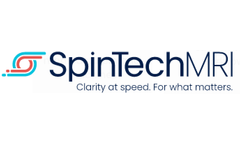Brain Cancer Articles & Analysis: Older
25 articles found
Breast cancer remains one of the most prevalent malignancies affecting women worldwide, necessitating innovative approaches for effective treatment and research. Among the most promising strategies in this endeavor are the use of tumor models for breast cancer and the development of customized antibody-drug conjugates (ADCs). ...
Therefore, comprehensive drug development is pivotal in addressing these challenges and enhancing therapeutic outcomes in brain cancer treatment. To meet the increasing demand for targeted therapies for brain tumor research, Alfa Cytology offers robust brain tumor drug development services. ...
Brain tumors can be broadly categorized into primary and secondary (or metastatic) tumors. ...
Doxil®, a PEGylated liposomal formulation of doxorubicin, is a well-known example used in cancer treatment. Improving Blood-Brain Barrier Penetration The blood-brain barrier (BBB) is a significant obstacle in the delivery of therapeutic agents to the central nervous system (CNS). PEG derivatives have shown the potential to enhance the ...
While it was first discovered in gliomas (a type of brain tumor), TNC protein is present in a variety of tissues, especially during embryonic development and tissue remodeling after injury. ...
Alfa Cytology has announced pancreatic cancer vaccine development services to improve the efficacy and safety of related vaccines. Alfa Cytology, a biotech company composed of scientists, bioinformatics, and oncologists, has recently announced its pancreatic cancer vaccine development services to provide further strategies for cancer therapy ...
Structure of Matrix Metalloproteinase (MMP) Family In vertebrates, the MMP family consists of 28 members, at least 23 of which are expressed in human tissues, 14 of which are expressed in the vascular system. MMPs are usually classified into collagenases, gelatinases, stromelysins, matrilysins, membrane-type (MT)-MMPs, and other MMPs based on their substrates and the organization of their ...
The potential benefits of small molecule drug therapy for brain tumors include inhibition of tumor growth, induction of cell death, and promotion of cancer cell proliferation. However, one of the challenges faced in developing small molecule drugs to treat brain cancer is the blood-brain barrier, a protective ...
The process of iPSC differentiation to neurons and neuronal cells is of special importance for neurobiology and related disorders, considering the dearth of clinically relevant in vitro models available for research, drug screening and development, as well as the lack of therapy to reverse neuronal damage. Benefits and advantages of iPSC differentiation to neural stem cells (NSC), neurons and ...
An article on the rapid identification of pediatric brain tumors using DMS was published in Frontiers in Oncology, section Neuro-Oncology and Neurosurgical Oncology! The results show that most common pediatric brain tumor samples can be differentiated with DMS. DMS shows promise in becoming and additional instrument for real-time diagnosis of brain tumors. (The header image for this post ...
Introduction Genomics has revolutionized cancer research, transforming the way we diagnose, treat, and monitor cancer. ...
Glioblastoma is a deadly brain cancer with a dire prognosis. Unlike most cancers, it still grows in the presence of the p53 protein. ...
The use of Quantitative Susceptibility Mapping (QSM) is often viewed as incompatible with current standard radiology workflows. Some radiologists or departments may be unaware of its existence or purpose. Despite the skepticism surrounding its viability in a clinical setting, QSM shows great potential in a wide range of clinical applications, particularly for biomarker detection and ...
In this four-year project, I’m collaborating with researchers from Amsterdam UMC and my colleagues at Medstone to find better treatment options for patients with brain cancer. Let me tell you more about my results so far. Information databases Developing new drugs costs a lot of money and a lot of time – the journey of developing a drug from scratch ...
Malignant melanoma, the most serious skin cancer, can metastasize to other organs. Once it has spread to other organs it is difficult to treat. ...
ZAP Surgical Systems, Inc. today announced it has received CE mark clearance to the new EU MDR for its ZAP-X® Gyroscopic Radiosurgery® platform. The CE mark makes it possible for healthcare providers to begin treating patients with the ZAP-X system in the European Union. For select indications including many primary and metastatic brain tumors, stereotactic radiosurgery (SRS) is proven ...
CURRENT STANDARD OF CARE FOR BRAIN TUMORS The current initial standard of care for aggressive brain tumors—whether they are primary brain tumors (ie, tumors that originate in the brain), or metastatic tumors from cancers that started outside of the brain—is resection. ...
ABSTRACT Patients with brain tumors face enormous challenges after diagnosis. Many of these challenges are amplified by issues related to access to care.1‒4 Studies suggest that patients with cancer who live farther from radiation treatment centers have poorer clinical outcomes. ...
“With our shared vision for advancing the field of radiosurgery for the brain, we are looking forward to introducing the globally recognized ZAP-X in ...
ZAP Surgical Systems, Inc. today announced ZAP-X® Gyroscopic Radiosurgery® patient treatments have commenced at MedStar Georgetown Cancer Institute at MedStar Southern Maryland Hospital Center in Clinton, MD. For many primary and metastatic brain tumors, stereotactic radiosurgery (SRS) has proven to be an effective treatment with outcomes equivalent to ...












